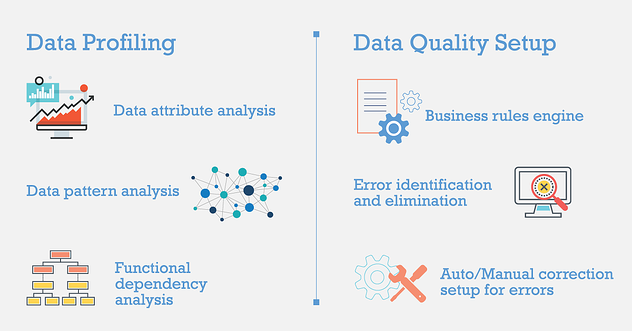The Centralized Data Repository (CDR) setup for asset management firms acts as the foundation for the data management initiatives. This is the first step towards achieving a single source of truth and eliminating siloed operations.
The next step is to ensure the quality of the data (that will be stored and managed in the CDR) meets the desired standards. For this purpose, data profiling is critical. Data is profiled in terms of its attributes, patterns, and functional dependencies, which in turn is analysed to create the business rules engine.

The business rules engine is used to eliminate duplicates, maintain the consistency of data formats, detect (and verify/fix) abnormal data changes etc, and also to improve process efficiency.
The rules can also be setup to resolve the data issues automatically, or to raise an alert and notify the respective stakeholders to fix the error, based on the complexity of the scenario.
The data profiling and business rules engine setup is a continual process. The higher the number of business rules, the better the data quality.
The benefits of business rules engine are multi-fold for the data management initiatives of asset management firms. The business rules not only add to data quality, but also reduce the time taken to detect and fix errors by reducing manual intervention. Further, they add to the efficiency of the data integration process, by reducing the volume of service requests from business users, while cutting costs.
Take a look at this infographic on data quality setup for asset management firms to learn more.

